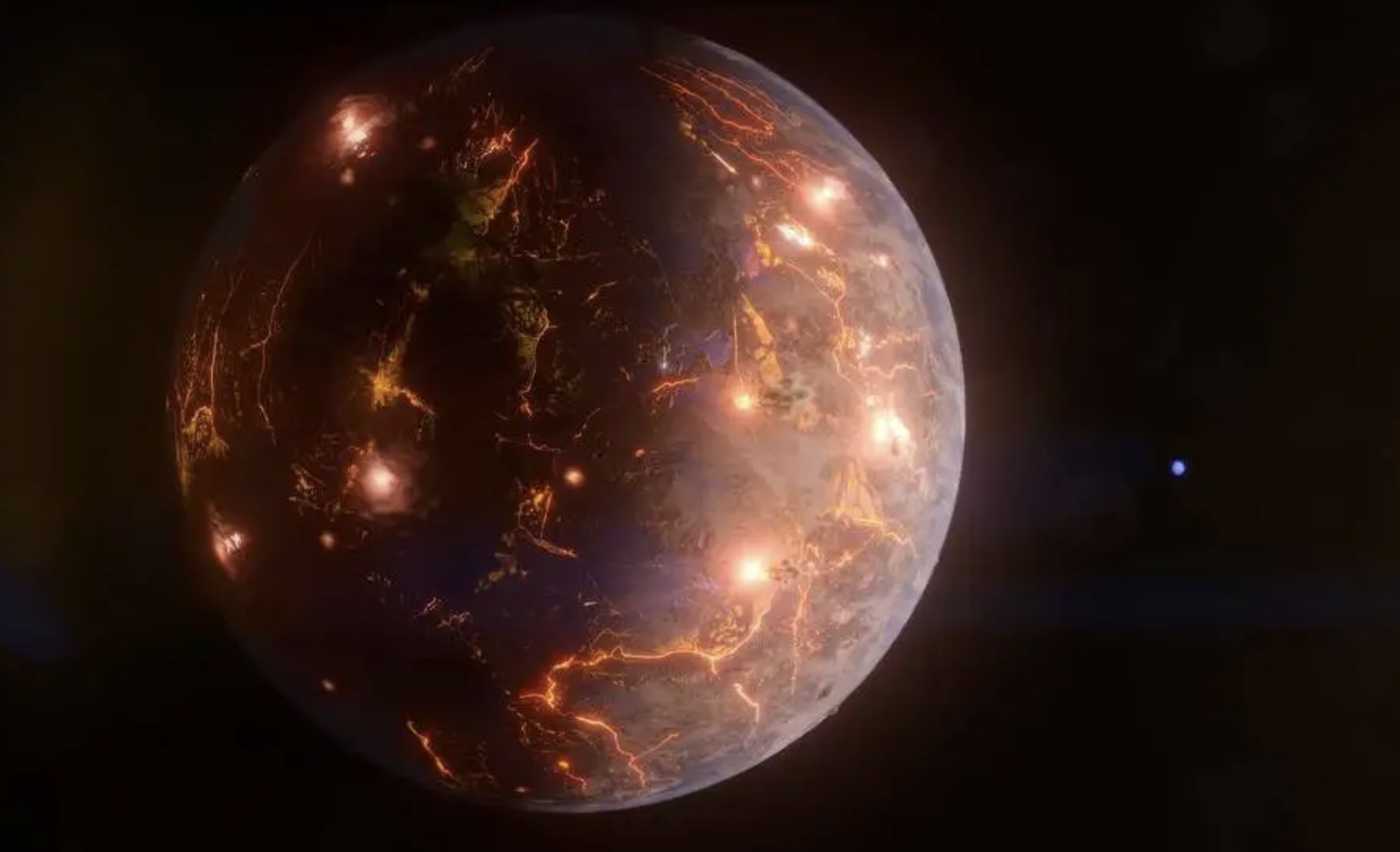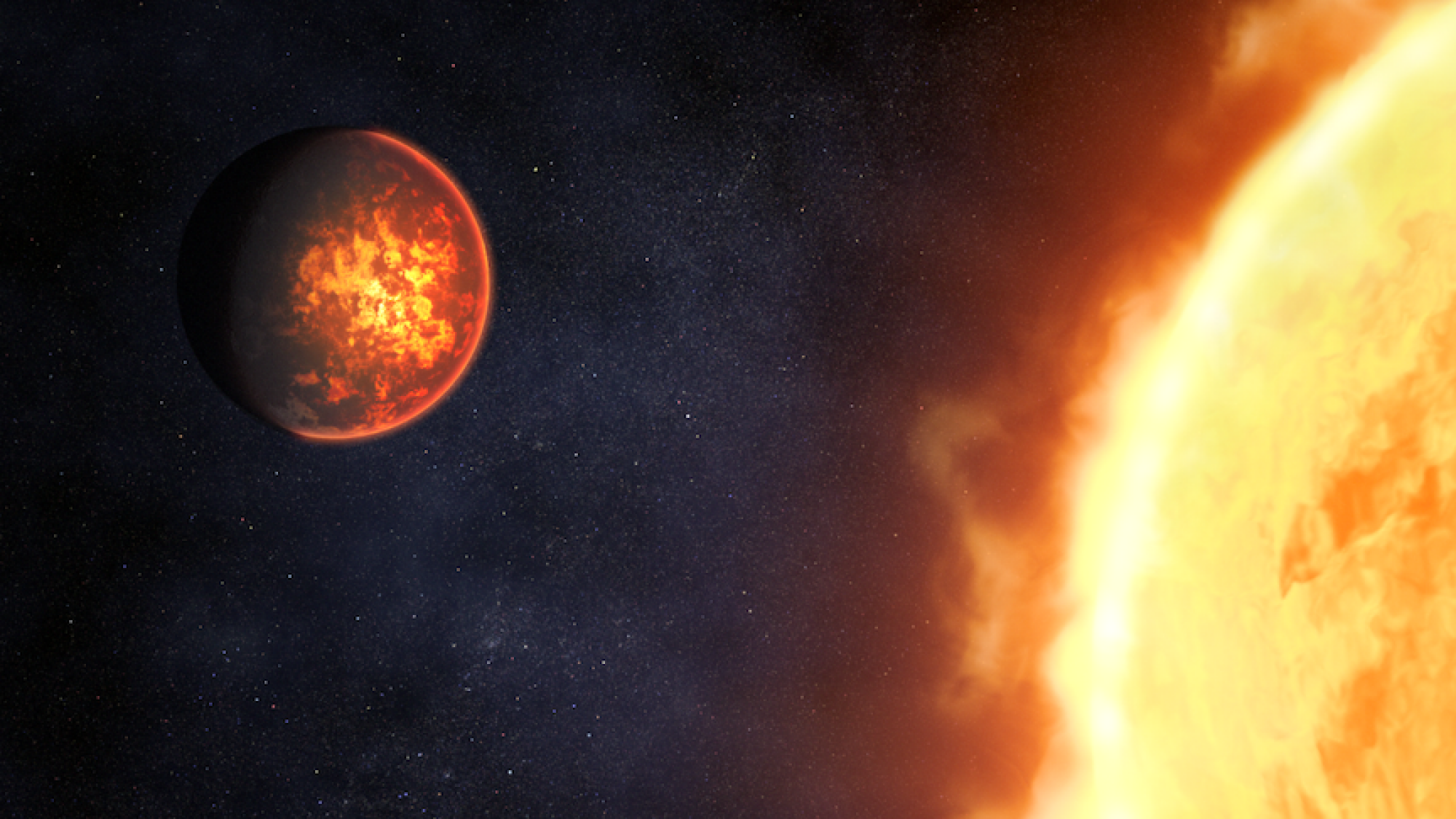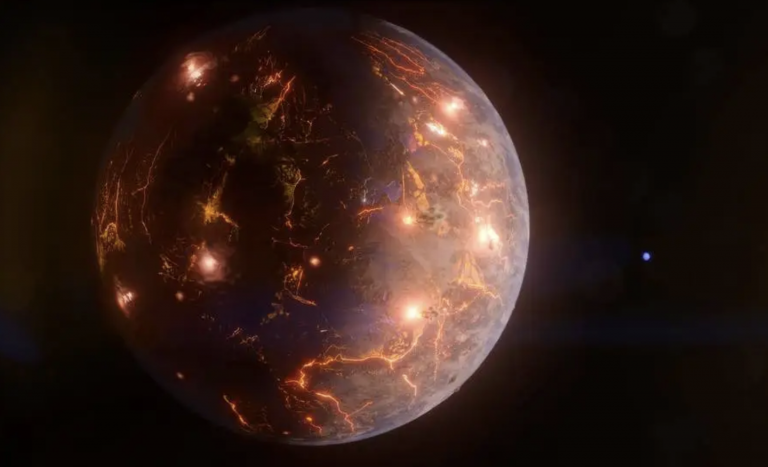
Astronomers discovered a truly tortured planet. It’ll make you thankful for Earth.
In a distant solar system some 66 light-years away, researchers used NASA’s Transiting Exoplanet Survey Satellite (TESS) to spot a volcano-blanketed world new to science. It’s covered in volcanoes because the other two planets in this system have forced it into an unusual elliptical orbit, which tugs and squeezes the world, roiling the interior.
The deep space situation is similar to what’s happening on Jupiter’s moon Io, an orb that’s relentlessly locked in a tug-of-war between nearby Jovian moons. This dynamic squeezes and stretches Io, stoking lava to pour out of volcanoes.
“This is a terrestrial planet that I would describe as Io on steroids,” Stephen Kane, a planetary astrophysicist at UC Riverside, said in a statement. “It’s been forced into a situation where it’s constantly exploding with volcanoes. At optical wavelengths you would be able to see a glowing, red-hot planet with a molten lava surface.”
Even our most powerful telescopes can’t capture a detailed view of a world many light-years away (a light-year is nearly 6 trillion miles), yet the NASA TESS instrument is designed to detect minute changes in light, and can see when a planet passes in front of its star — which results in a temporary dimming. This leads to the discovery of worlds beyond our solar system, called exoplanets.
“It’s been forced into a situation where it’s constantly exploding with volcanoes.”
In the new volcano-world research, recently published in The Astronomical Journal, Kane and the team show how two larger outer planets in this solar system (dubbed “HD 104067”) exert strong gravitational influence on the inner-planet, forcing it into an eccentric orbit that ultimately squashes the tortured world, generating heat and intensive geologic activity.
The surface is 2,600 degrees Kelvin, or some 4,220 degrees Fahrenheit, many times hotter than a pizza oven. (The sun‘s surface is over 10,000 F degrees.)

Credit: NASA / ESA / CSA / Dani Player (STScI)
So far, astronomers have confirmed over 5,600 exoplanets, most of which are inhospitable worlds. Some even rain metal. Around 200 are rocky worlds like Earth or Mars. Planetary scientists are especially interested in finding rocky planets that orbit in their solar system’s respective “habitable zone,” a temperate region where liquid water could exist.
There’s still no evidence life exists beyond Earth, but Earth-like worlds are a smart place to look.




















0 Comments